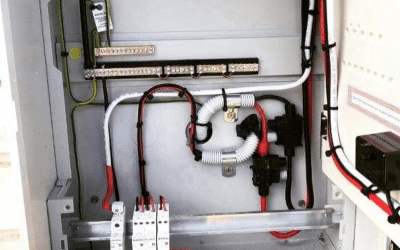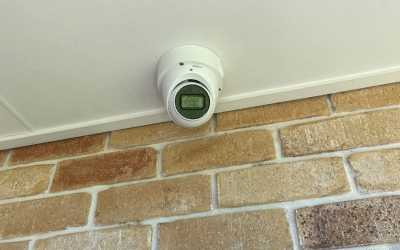Introduction
Welcome, Brisbane residents and those with an interest in sustainable living! When it comes to the forefront of eco-friendly solutions in home design, ‘green building’ stands out as a promising and impactful approach. And as we all know, staying cool in our beautiful subtropical climate is paramount. So, let’s delve into the significant role of energy-efficient air conditioning in green building design.
Understanding Green Building Design
Green building design goes beyond the simple mandate of limiting energy consumption; it’s a holistic approach to constructing and managing buildings to create a minimal environmental impact. It’s not just about the building materials or the energy consumed; it’s about designing structures that work with the environment instead of against it. This approach includes water use, waste management, land use, and yes, even how we cool our homes.
Importance of Energy Efficiency in Buildings
Energy efficiency, particularly in a warm climate like ours in Brisbane, is crucial for a couple of key reasons. Firstly, energy-efficient buildings help reduce the environmental impact by lowering greenhouse gas emissions. These buildings require less energy for heating, cooling, and other functions which directly translates into fewer carbon emissions.
Secondly, energy-efficient buildings can significantly cut costs. As you would imagine, using less energy leads to lower energy bills. However, the savings don’t just stop there. Energy-efficient buildings are designed to last, meaning maintenance costs over the lifetime of the building can also be significantly reduced.
In a world growing more aware of our environmental impact and the need for sustainable solutions, energy efficiency isn’t just a ‘nice-to-have’; it’s a necessity. So, let’s see how energy-efficient air conditioning plays a role in this green building revolution.
The Basics of Air Conditioning
When it comes to beating the Brisbane heat, air conditioning isn’t a luxury—it’s a necessity. But what exactly is air conditioning, and how does it help us stay cool? Let’s break down the fundamentals.
What is Air Conditioning?
Air conditioning, at its most basic level, is the process of altering the properties of air, primarily temperature and humidity, to more comfortable conditions. The aim is to distribute this conditioned air throughout a building, a process which, when performed correctly, improves indoor air quality and enhances the comfort of occupants.
How Do Air Conditioning Systems Work?
Air conditioning systems work by moving heat from inside your home to the outdoors, effectively cooling the interior air. This process involves several key components, each playing a crucial role.
Components of Air Conditioning Systems
The essential parts of an air conditioning system include the compressor, the condenser, the evaporator coil, and the air handling unit.
The Role of Each Component
The compressor, often referred to as the heart of the system, compresses the refrigerant, which is the material that carries heat. The condenser is where this heat is expelled, cooled down, and transformed into a high-pressure liquid. This liquid then moves into the evaporator coil, where it’s transformed back into a gas, absorbing heat from the air in the process. The air handling unit then blows this cooler air throughout your home.
Different Types of Air Conditioning Systems
While the basic operation is the same, there are different types of air conditioning systems that might be suitable for different homes and situations.
Central Air Conditioning
Central air conditioning systems are designed to cool the entire house. They’re typically split systems, with an outdoor unit housing the compressor and condenser, and an indoor unit housing the evaporator coil and air handler. Central air conditioners are a great option if you want uniform cooling throughout your home.
Ductless, Mini-Split Air Conditioners
Ductless or mini-split systems are ideal for cooling specific rooms or zones within a home. Each room or zone has its own air handler, which makes it possible to control the temperature independently in each area. This can be a highly efficient way to cool your home, especially if certain rooms are not used frequently.
Window Units
Window units are a type of unitary air conditioning system, meaning the entire air conditioner is housed in a single unit. These systems are compact and designed to cool a single room. They’re a popular choice for apartments or smaller spaces, as they’re more affordable and easier to install than central air conditioning systems. However, they are usually less energy-efficient.
So, now that we understand the basics of air conditioning, it’s time to look at the concept of energy efficiency in this context, and why it’s important.
The Importance of Energy Efficiency in Air Conditioning
As residents of sunny Brisbane, we’re no strangers to cranking up the air con on those sweltering summer days. But, with the increasing need for sustainable living, it’s crucial to understand the impact of our cooling habits on our energy consumption, and how energy-efficient air conditioning can make a difference.
The Impact of Air Conditioning on Energy Consumption
Air conditioning accounts for a significant portion of household energy consumption, especially during the peak summer months. The need to cool our homes and maintain a comfortable living environment often leads to higher electricity bills and contributes to the strain on our national power grids. This energy use isn’t just a hit to our wallets; it also contributes to greenhouse gas emissions, given that much of Australia’s electricity still comes from fossil fuels.
How Energy-Efficient Air Conditioning Reduces Energy Use
Energy-efficient air conditioning systems are designed to cool your home effectively while using less energy. This is achieved through a variety of means, from advanced compressor designs to smart technology that fine-tunes cooling based on the needs of your home. In comparison to traditional units, energy-efficient air conditioners can save up to 30-50% on energy costs, depending on the system and usage.
These savings can add up over the lifespan of the air conditioner, making an energy-efficient system a smart investment. Additionally, by reducing your energy consumption, you’re also lessening your environmental impact—a win-win!
The Technology Behind Energy-Efficient Air Conditioning
A few key technological innovations contribute to the energy efficiency of modern air conditioning systems. Variable speed compressors, for instance, adjust their speed based on the cooling demand, reducing unnecessary energy use.
Improved heat exchangers allow for better heat transfer, which increases the system’s overall efficiency. Modern air conditioning units are also equipped with smart thermostats that optimise temperature settings based on time of day, occupancy, and other factors.
These technologies, when combined with regular maintenance like cleaning and replacing filters, contribute to the overall efficiency of an air conditioning system, reducing energy consumption without compromising on comfort.
So, it’s clear that energy efficiency in air conditioning is vital—not just for our individual homes, but for Brisbane and our planet as a whole. But how does this tie in with green building design? Let’s explore that next.
Role of Energy-Efficient Air Conditioning in Green Building Design
Air conditioning is an integral part of our Brisbane homes, but how does it fit into the broader picture of green building design? Understanding this link helps us appreciate the significance of choosing energy-efficient air conditioning systems.
Principles of Green Building Design
Green building design is underpinned by several key principles that aim to minimise the environmental impact of buildings while creating healthier and more comfortable spaces for occupants. These principles include:
- Energy efficiency: Reducing the amount of energy a building needs to function.
- Sustainability: Using materials and processes that are environmentally friendly and sustainable.
- Water efficiency: Minimising water use and maximising the use of rainwater or recycled water.
- Indoor environmental quality: Enhancing the comfort, health, and productivity of occupants.
- Innovation: Encouraging the adoption of new or innovative approaches to green building design.
How Energy-Efficient Air Conditioning Supports Green Building Design
Within these principles, energy-efficient air conditioning plays a vital role, contributing primarily to energy efficiency and indoor environmental quality.
Reduced Energy Use and Greenhouse Gas Emissions
Energy-efficient air conditioning systems consume less electricity, directly reducing greenhouse gas emissions associated with energy production. This ties into the principles of energy efficiency and sustainability, helping to minimise the environmental footprint of the building. Not only do these systems make your home more eco-friendly, but they can also help cut down your energy bills.
Improved Indoor Air Quality
Air conditioning systems do more than cool your home—they also contribute to the quality of the indoor air. Energy-efficient air conditioners often come with better filtration systems, reducing indoor pollutants like dust, pollen, and other allergens. This contributes to healthier indoor environments, aligning with the green building principle of indoor environmental quality.
Enhancing Comfort and Well-being
Green building design isn’t just about the environment—it’s also about creating comfortable spaces for people to live, work, and play. Energy-efficient air conditioning systems can provide superior comfort by maintaining consistent temperatures, controlling humidity, and reducing noise levels. They’re designed to create a pleasant indoor climate, ultimately enhancing the well-being of occupants.
In conclusion, energy-efficient air conditioning is a significant piece of the green building puzzle. It’s a tangible step towards a more sustainable future, and one that doesn’t require us to sacrifice our comfort in our warm Brisbane climate.
Energy-Efficient Air Conditioning Technologies
To truly appreciate the potential of energy-efficient air conditioning, it’s essential to understand the technologies that power these systems. Let’s explore both the current and emerging technologies shaping the landscape of green building.
Current Energy-Efficient Air Conditioning Technologies
Several technologies available today significantly boost the energy efficiency of air conditioning systems. These include:
Variable-Speed Technology
Unlike traditional systems that operate at full speed, variable-speed technology allows the air conditioner to adjust its speed based on the cooling demand. This means the system uses only as much energy as necessary, leading to reduced power consumption and lower energy bills.
Smart Controls
Smart controls and thermostats can automatically adjust temperatures based on factors like the time of day, occupancy, and outdoor temperature. By optimising temperature settings, these controls can help save energy without compromising comfort. Some systems also allow remote access, providing even greater control over your air conditioner’s operation.
High-Efficiency Filters
While not directly affecting energy consumption, high-efficiency filters are a common feature of energy-efficient air conditioning units. They can effectively trap pollutants and allergens, thereby improving indoor air quality. Remember, green building design is not only about energy efficiency but also about creating healthier indoor environments.
Emerging Air Conditioning Technologies for Green Building
Looking to the future, several exciting technologies are on the horizon that promise even greater energy efficiency.
Thermally Driven Air Conditioning
Thermally driven air conditioning is a technology that uses solar heat and natural gas to cool homes. This dual-source system is extremely efficient, and while it’s still quite expensive, prices are expected to decrease as the technology matures.
Solar Air Conditioning
Solar air conditioning uses the power of the sun to cool your home. While photovoltaic systems (solar panels) can power conventional air conditioners, there are also thermal cooling systems that use heat from solar collectors to drive the cooling process. This technology offers the promise of greatly reducing the environmental impact of air conditioning.
Ice-Powered Air Conditioning
Ice-powered air conditioning, or ice batteries, work by freezing water at night when energy demand is low. The ice is then used to cool air during the day. This helps to reduce the strain on the power grid during peak times and can also lower energy costs by using electricity during off-peak hours.
As these technologies become more widespread, they’ll further reinforce the important role of energy-efficient air conditioning in green building design. We’re at a time of significant innovation in this field, and the future for green building in Brisbane—and around the world—is promising.
Real-World Examples of Energy-Efficient Air Conditioning in Green Buildings
To get a sense of what energy-efficient air conditioning looks like in practice, let’s take a look at three Australian examples. These case studies—from Sydney, Melbourne, and Perth—showcase how energy-efficient air conditioning has been incorporated into green building designs to great effect.
Case Study: Green Building in Sydney
Our first example takes us to Sydney’s Barangaroo South, home to one of the most sustainable commercial precincts in the world. The development has received numerous awards for its commitment to sustainability, which includes using state-of-the-art energy-efficient air conditioning systems.
These systems utilise variable-speed technology, advanced heat recovery, and smart controls to minimise energy use. Coupled with other green initiatives such as onsite renewable energy generation and water recycling, Barangaroo South is a shining example of green building design in action.
Case Study: Energy-Efficient Office Building in Melbourne
Next, we travel to Melbourne, where an office building has been lauded for its energy-efficient design. The building uses a high-efficiency air conditioning system, equipped with smart controls and high-efficiency filters, to create a comfortable, healthy, and energy-efficient work environment.
Moreover, the air conditioning system works in tandem with the building’s design, which maximises natural light and ventilation. This integrated approach highlights how energy-efficient air conditioning can be part of a comprehensive strategy for green building design.
Case Study: Green Residential Complex in Perth
Finally, we head to Perth, where a green residential complex has been making waves. Each home in the complex is equipped with energy-efficient air conditioning systems that utilise variable-speed technology and smart controls.
Beyond air conditioning, the complex also uses solar panels, rainwater harvesting, and green materials to create a truly sustainable living environment. This example shows how energy-efficient air conditioning is just as important in residential settings as it is in commercial ones.
These case studies clearly demonstrate the crucial role of energy-efficient air conditioning in green building design. They underscore the potential for such technologies to create buildings that are not only more comfortable and healthier but also more sustainable.
Conclusion
We’ve explored the role of energy-efficient air conditioning in green building design, delved into the technologies behind it, and seen real-world examples of its application. But what does this mean for our future and how can you take advantage of these technologies?
The Future of Energy-Efficient Air Conditioning in Green Building
As more people recognise the importance of green building, the role of energy-efficient air conditioning will continue to grow. Technological advancements will make these systems even more efficient, helping us reduce our carbon footprint and create healthier indoor environments. With Brisbane’s sunny climate, solar air conditioning, in particular, holds much promise.
Additionally, energy-efficient air conditioning systems will play a crucial role in meeting Australia’s environmental goals, and their widespread adoption will be key to transitioning towards a more sustainable built environment. There’s no doubt that energy-efficient air conditioning is the future of green building, and it’s an exciting time to be part of this change.
How You Can Apply Energy-Efficient Air Conditioning in Your Own Building
Applying energy-efficient air conditioning in your own building—whether it’s your home or a commercial space—is not just good for the environment; it can also lead to significant cost savings. Here’s how you can get started:
- Upgrade to an Energy-Efficient System: If your current air conditioning system is old, consider upgrading to a more energy-efficient model. Look for systems with a high energy star rating.
- Use Smart Controls: Smart controls can help you manage your air conditioning usage more effectively, reducing energy waste.
- Regular Maintenance: Regular maintenance can keep your air conditioning system running efficiently. This includes cleaning or replacing filters and servicing the system as recommended by the manufacturer.
- Integrate with Green Building Design: If you’re building or renovating, consider how you can integrate energy-efficient air conditioning into a broader green building design. This could include measures like good insulation, strategic shading, and natural ventilation.
Whether you’re in Brisbane or elsewhere in Australia, energy-efficient air conditioning offers a tangible way to make our buildings greener. Embracing these technologies is a step towards a more sustainable future—one where our comfort doesn’t come at the cost of our planet.







